Idea by
Yixuan Cai, Cao XueFei
Conversazione
Call for ideas 2021
QiWu: Natural Footprint in Technological Vicissitude
QiWu: Natural Footprint in Technological Vicissitude
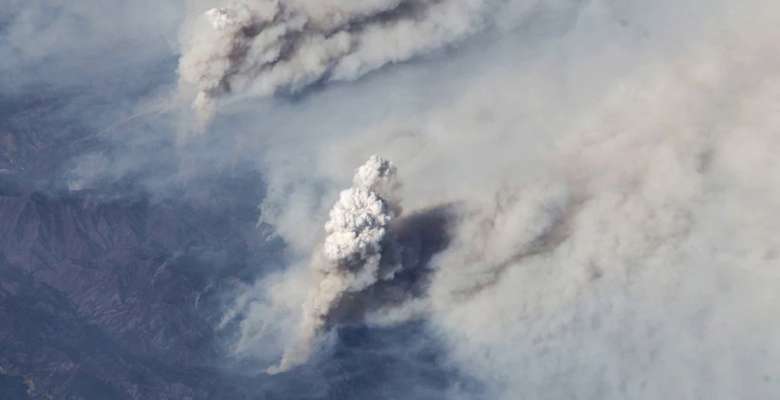
- Systemic changes
This project uses The Stack (Benjamin Bratton) to delineate the earth design framework within “the numerous devices from terrene to ether”, and the Qiwu (equality of things by Chuang Tzu) to elicit the unification between landscape and cosmology. The counterbalance between nature and humanity constrained by ritual and folklore, disintegrates gradually during the process of modernization, and has been transformed into a new treatment of conflicts under the guidance of technology.
The project envisages an open platform with infinite routes informed by diverse experiences, within which people sense the environment (air, water, ground) from their localized cultures and fringe knowledge. It first takes the combination of modern technology and ethnographic perception in China as an example to present viability. Based on multiple epistemes, it opens possibilities for future architectures on alternative management strategies with respect to neglected localities and indigenous techniques.
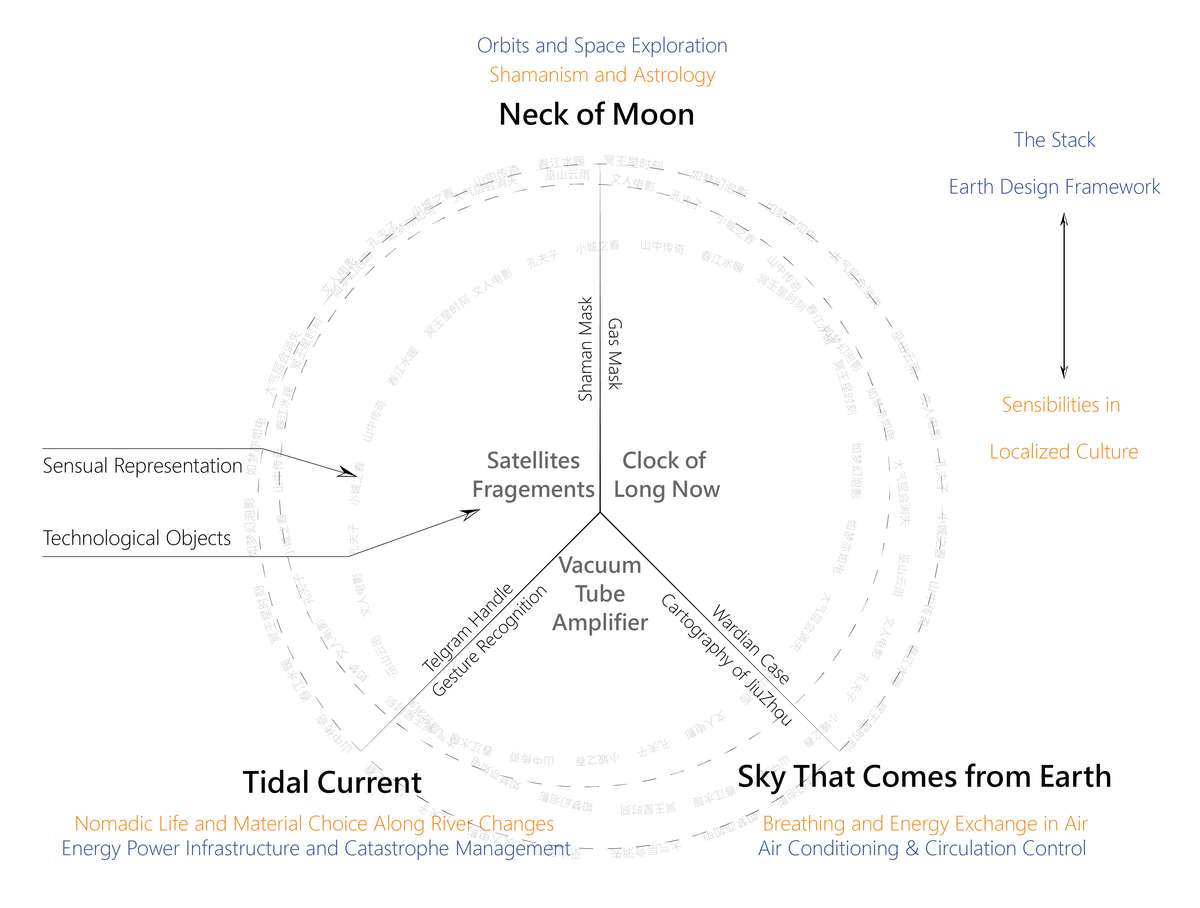
As a platform, we collect technological objects, anthropological research and sensible representation from different locations, and form a creative juxtaposition of different kinds of knowledge and sensibilities.
The project regards nature and technological system as organic matter, exploring the biosynthesis between technology and local experience. It is divided into three sections — Sky That Comes from Earth, Neck of Moon and Tidal Current.
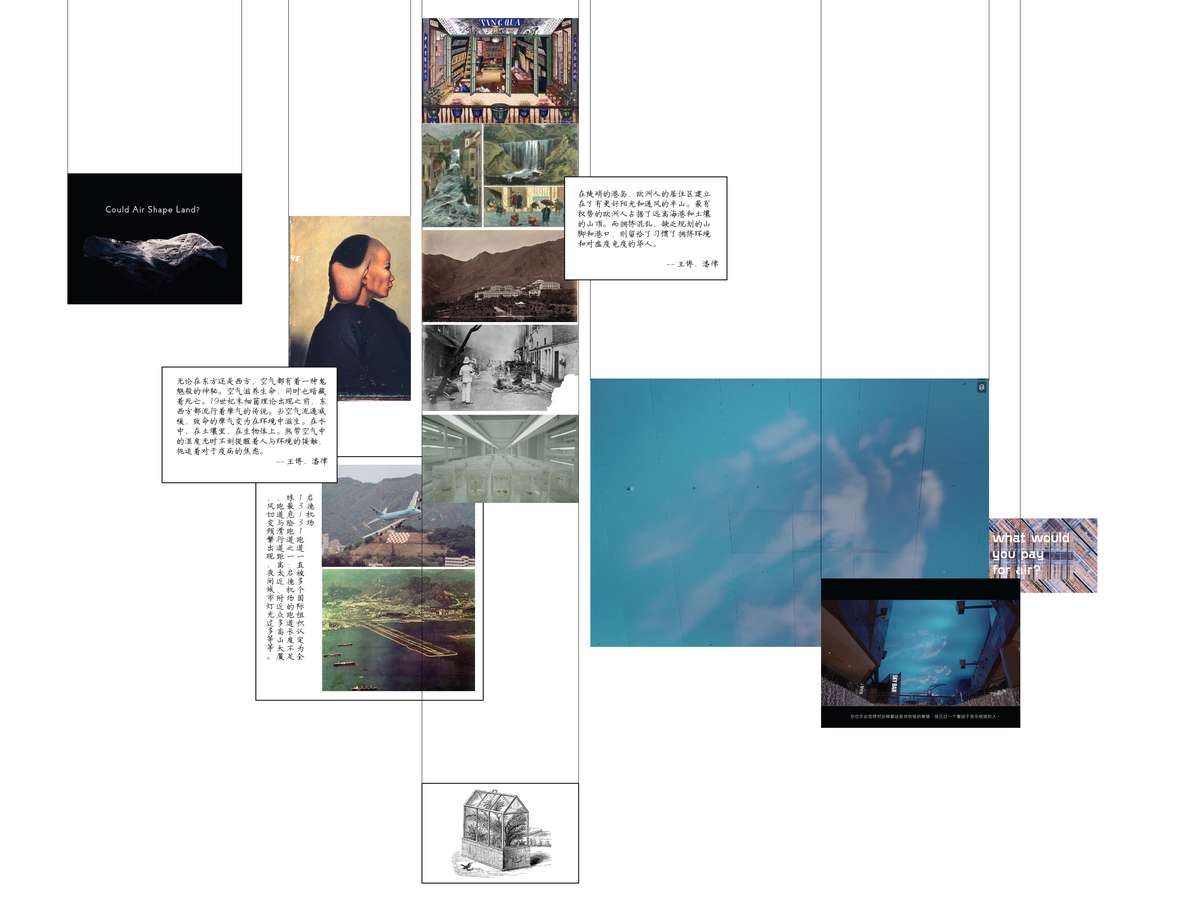
The Sky that Comes from Earth: With skylight shining on ground, the humidity, virus and floatage in the air all come from ecological barriers, combustion of geological resources, or even the spatial condition of land. The apprehension of industrial emission and miasma leads to spatial stratification. The streaming media is a screen of the anxiety from land disposition. Constant in a state of escape, information just like air, is a surface between land and body, immersing into the quotidian life.
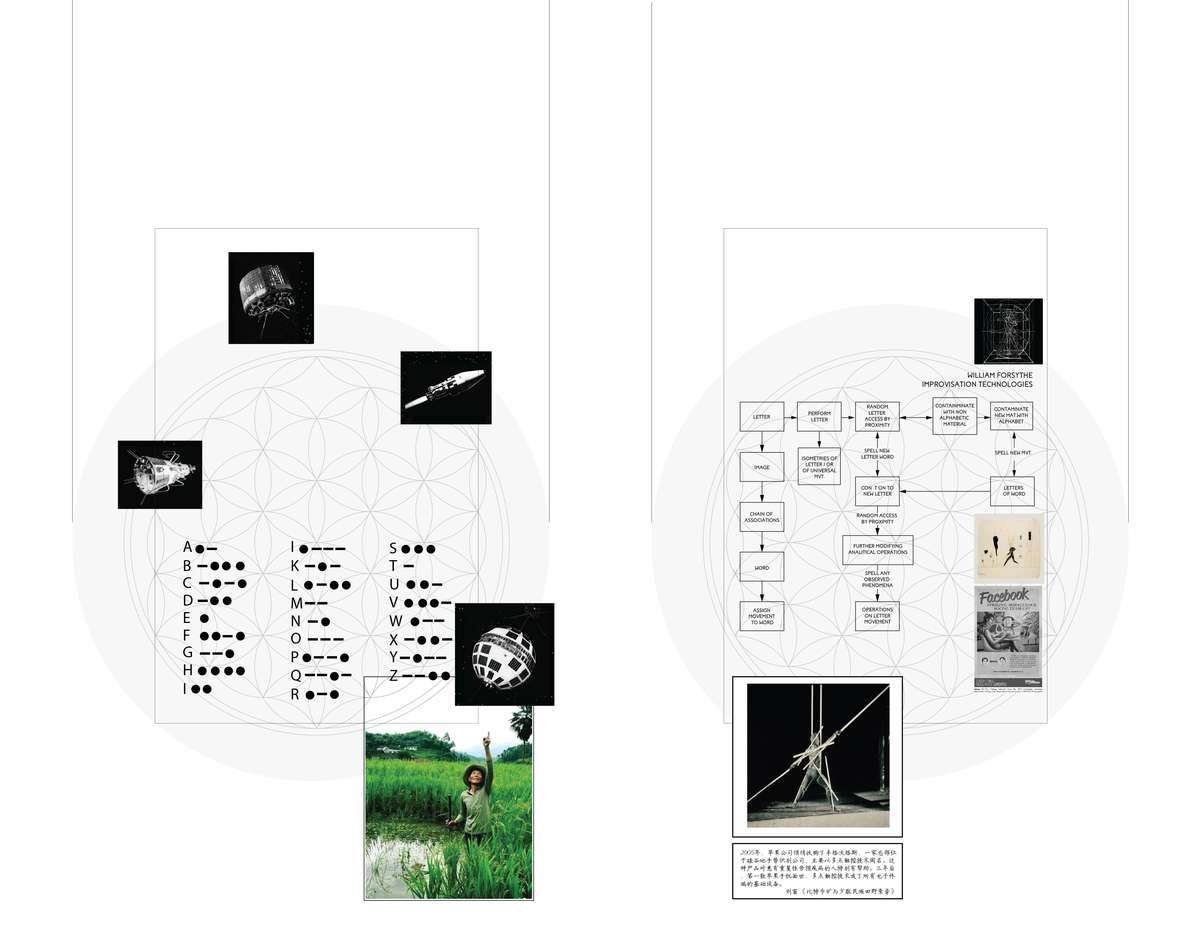
The Neck of Moon:The umbilical cord between geocenter and satellite is like the neck of moon. Launching and signal-receiving terminals are like corporal bodies on ground, while satellites orbits throw the law of geopolitics into space. As sensing devices connect to telecommunication service, they also train the body and gestures. In this journey through the atmosphere, oriental occult locates humans in the cosmos, while science endows humans with planetary-scale cognition and control of earth.
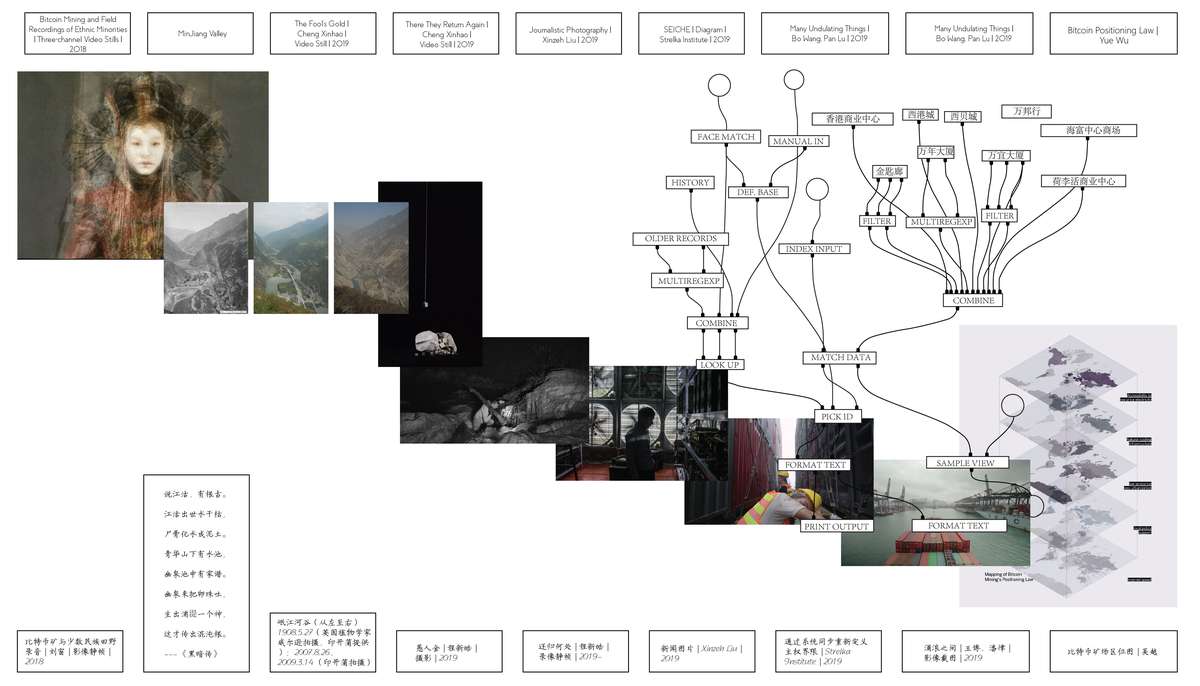
Tidal Currents: the traction that the moon functions on hydrology, is converted to energy in tide, delivered to steel pipelines and connected electronic chips or satellite networks. It compresses the sensation of undulating mountains and rivers into libido, involved in virtual investment and endless consumption.
QiWu: Natural Footprint in Technological Vicissitude
QiWu: Natural Footprint in Technological Vicissitude

- Systemic changes
This project uses The Stack (Benjamin Bratton) to delineate the earth design framework within “the numerous devices from terrene to ether”, and the Qiwu (equality of things by Chuang Tzu) to elicit the unification between landscape and cosmology. The counterbalance between nature and humanity constrained by ritual and folklore, disintegrates gradually during the process of modernization, and has been transformed into a new treatment of conflicts under the guidance of technology.
The project envisages an open platform with infinite routes informed by diverse experiences, within which people sense the environment (air, water, ground) from their localized cultures and fringe knowledge. It first takes the combination of modern technology and ethnographic perception in China as an example to present viability. Based on multiple epistemes, it opens possibilities for future architectures on alternative management strategies with respect to neglected localities and indigenous techniques.
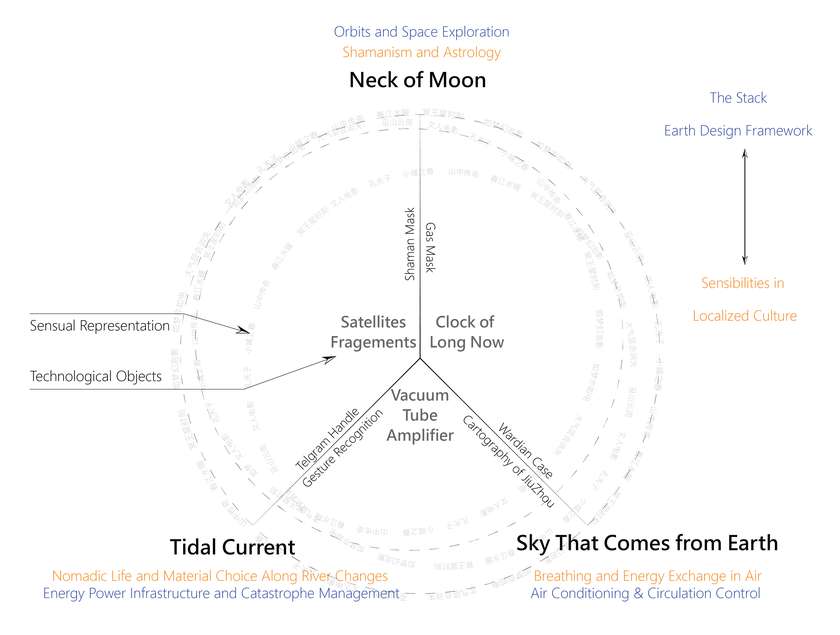
As a platform, we collect technological objects, anthropological research and sensible representation from different locations, and form a creative juxtaposition of different kinds of knowledge and sensibilities.
The project regards nature and technological system as organic matter, exploring the biosynthesis between technology and local experience. It is divided into three sections — Sky That Comes from Earth, Neck of Moon and Tidal Current.
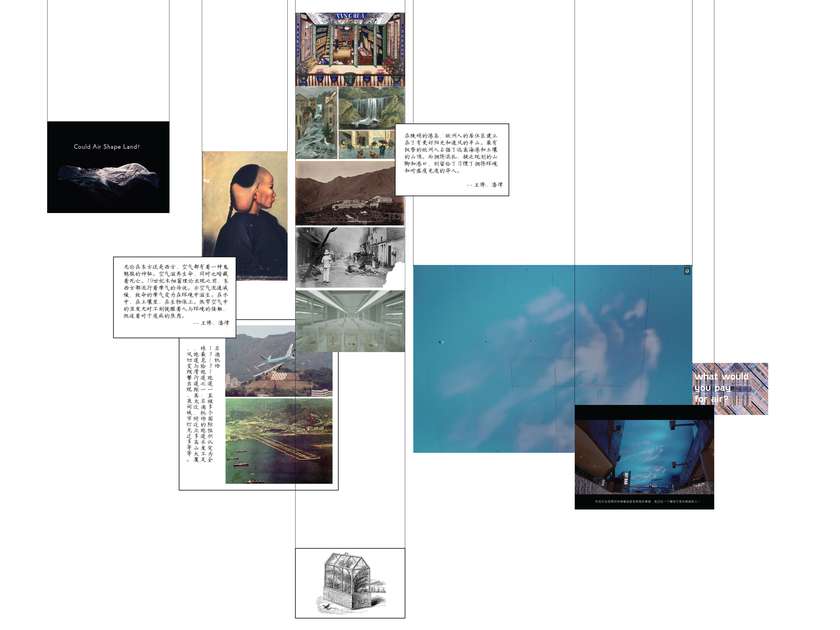
The Sky that Comes from Earth: With skylight shining on ground, the humidity, virus and floatage in the air all come from ecological barriers, combustion of geological resources, or even the spatial condition of land. The apprehension of industrial emission and miasma leads to spatial stratification. The streaming media is a screen of the anxiety from land disposition. Constant in a state of escape, information just like air, is a surface between land and body, immersing into the quotidian life.
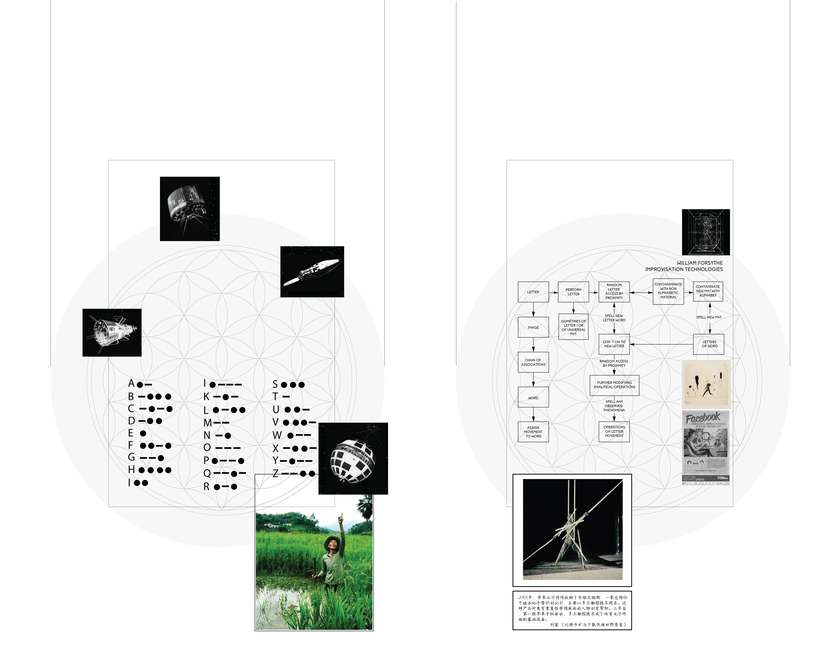
The Neck of Moon:The umbilical cord between geocenter and satellite is like the neck of moon. Launching and signal-receiving terminals are like corporal bodies on ground, while satellites orbits throw the law of geopolitics into space. As sensing devices connect to telecommunication service, they also train the body and gestures. In this journey through the atmosphere, oriental occult locates humans in the cosmos, while science endows humans with planetary-scale cognition and control of earth.
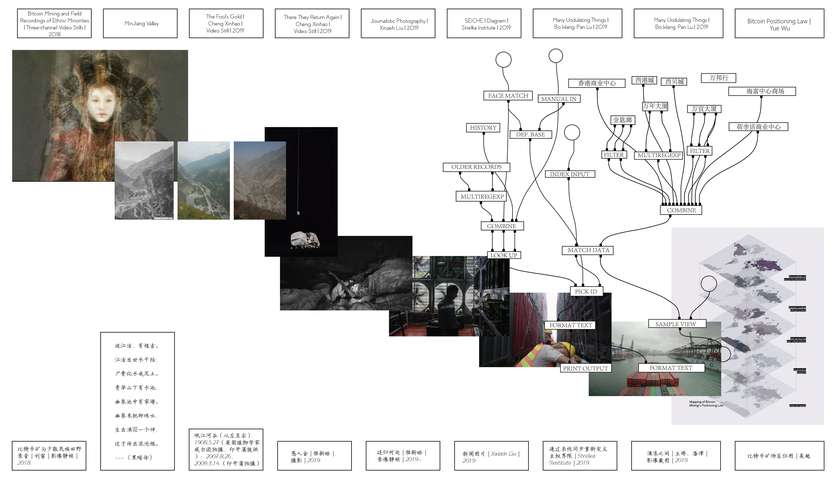
Tidal Currents: the traction that the moon functions on hydrology, is converted to energy in tide, delivered to steel pipelines and connected electronic chips or satellite networks. It compresses the sensation of undulating mountains and rivers into libido, involved in virtual investment and endless consumption.